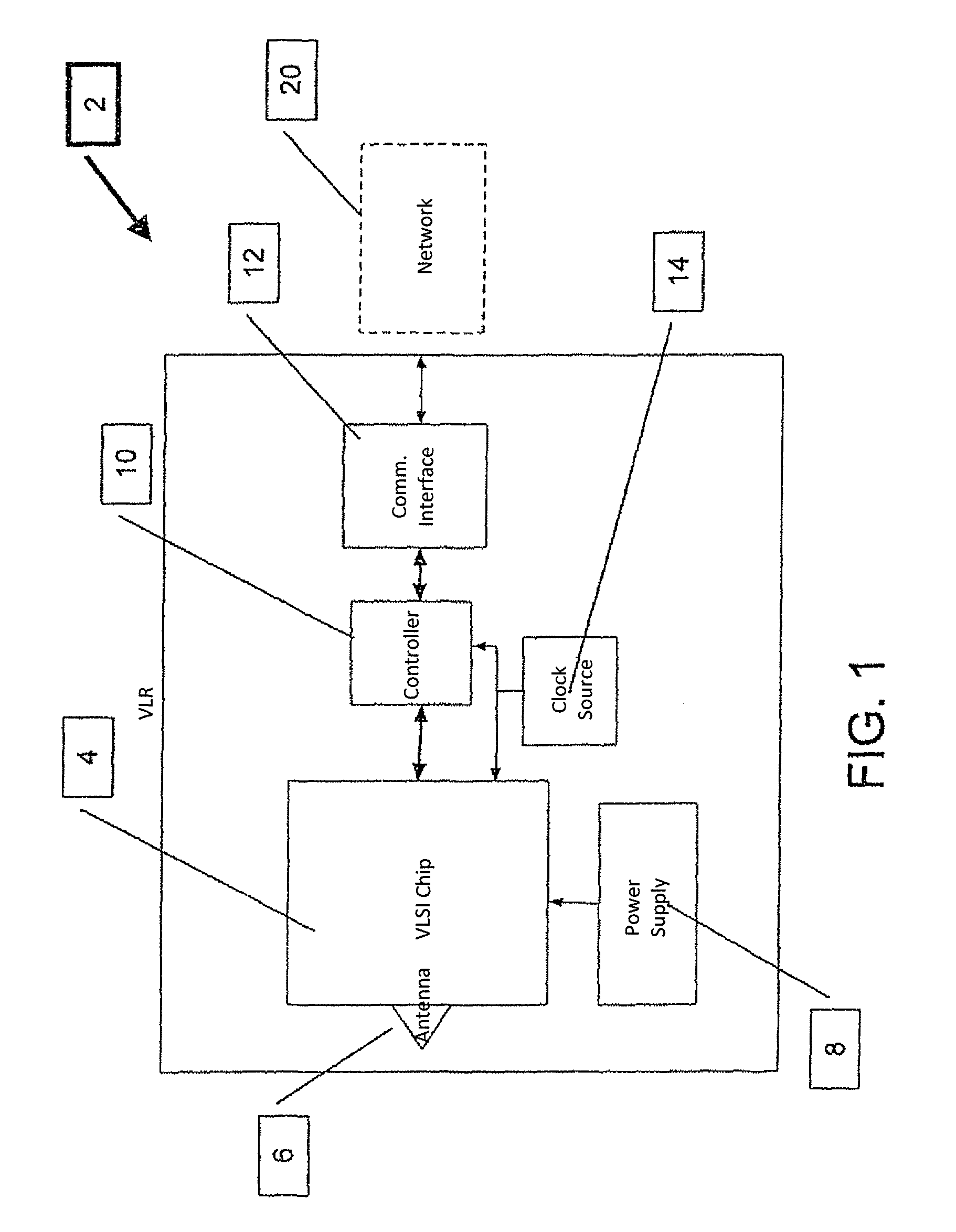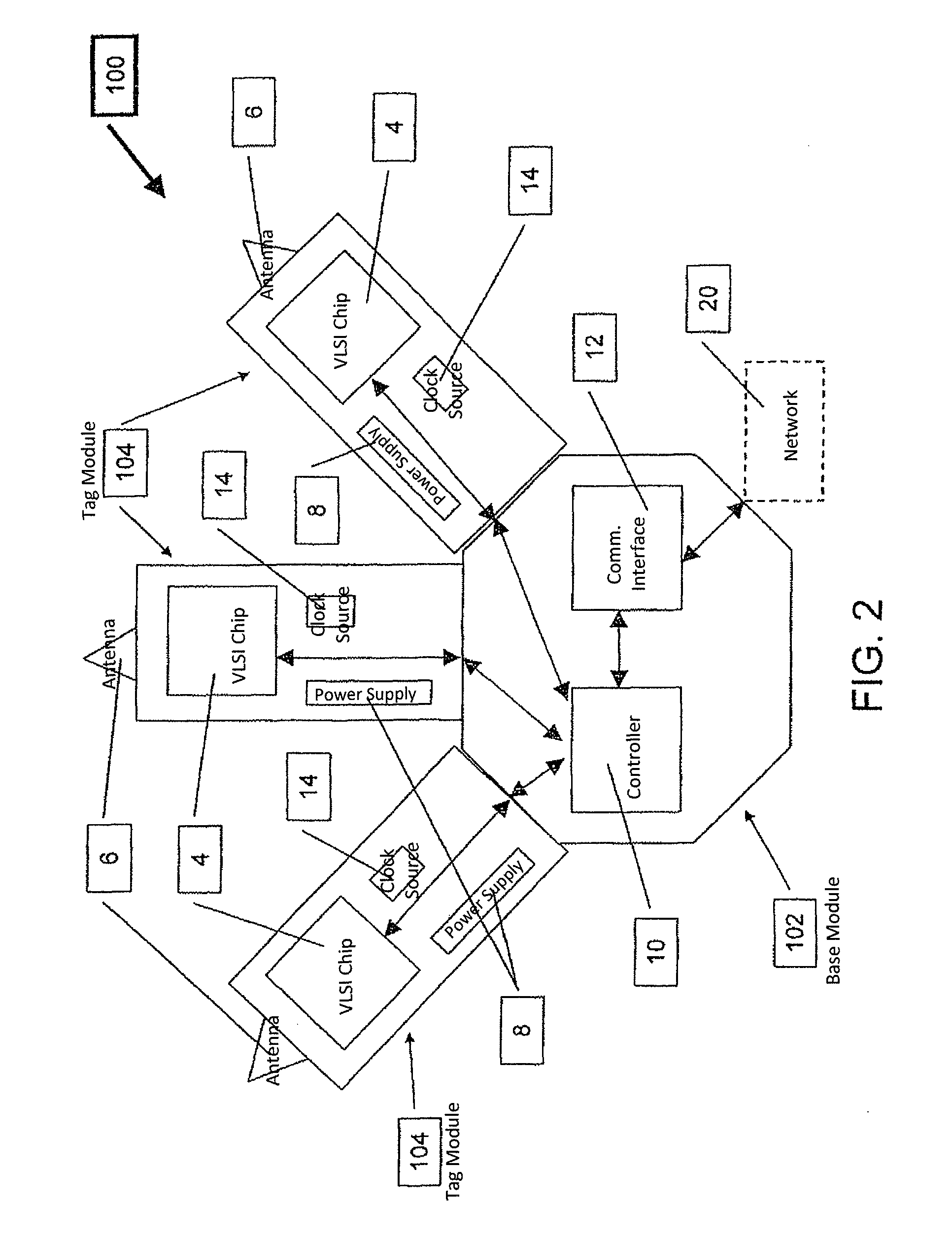Array of very light readers for active RFID and location applications
a very light reader and active rfid technology, applied in the field of rfid systems, can solve the problems of increasing the cost of the reader further, lowering the coverage ability of the system, and the use of readers usually capable of providing coverage for the size of the facility may still not provide adequate rf coverage, so as to improve the reliability of backhaul, and reduce the probability of collision
- Summary
- Abstract
- Description
- Claims
- Application Information
AI Technical Summary
Benefits of technology
Problems solved by technology
Method used
Image
Examples
Embodiment Construction
[0032]The present invention is a cost effective system that uses an array of Very Light Readers (VLR's) in which each VLR is based on an augmented RFID Tag circuit.
[0033]The principles and operation of system that uses an array of VLR's according to the present invention may be better understood with reference to the drawings and the accompanying description.
[0034]By way of introduction, the terms “Very Light Reader”, “Very Light Readers”, “VLR” (singular) and “VLR's” (plural) are used herein to refer to an augmented RFID Tag circuit as described herein and such terms may be used interchangeably.
[0035]The VLR's of the present invention provide an alternative to the costly RF Readers of the prior art. The system of the present invention uses a relatively large quantity of VLR's per a given site, providing higher coverage and with a low installation and maintenance cost. In order to reduce the size and cost in comparison to known Readers, the functionality of a VLR is limited.
[0036]Th...
PUM
 Login to View More
Login to View More Abstract
Description
Claims
Application Information
 Login to View More
Login to View More - R&D
- Intellectual Property
- Life Sciences
- Materials
- Tech Scout
- Unparalleled Data Quality
- Higher Quality Content
- 60% Fewer Hallucinations
Browse by: Latest US Patents, China's latest patents, Technical Efficacy Thesaurus, Application Domain, Technology Topic, Popular Technical Reports.
© 2025 PatSnap. All rights reserved.Legal|Privacy policy|Modern Slavery Act Transparency Statement|Sitemap|About US| Contact US: help@patsnap.com



